Mingda mono block
amplifiers
MC300-C and
MC3008-A
Lampized in July
2010
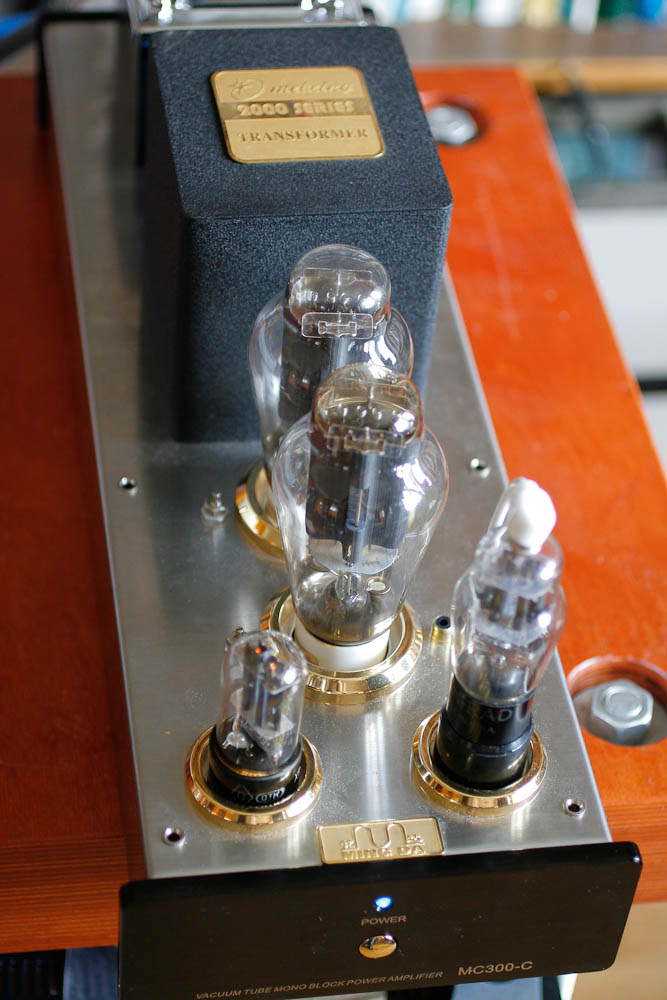
Ming-da
amplifiers have been "polluting" the google search for the key
words like 805, 300B or Amplifier - for quite some time. I realized
that this is a Chinese brand that makes "Chinese high end". Their top
model (featured here 805/2A3 called MC3008-A
is really
intriguing, especially for 1490 USD plus shipping. Yes
- PER PAIR. )
The cheaper
cousin is MC-300-C which is a push-pull 300B triode amp.
Very sexy looking , resembling (maybe even too much) the CARY and Jadis
amps. It has a nominal power of 25 Watts, and that is A LOT in my book.
http://www.china-highend-hifi.com/prod011234124226.htm
This pair sells
for just a little bit above 1000 USD, just a hair on
the wrong side of a grand. (on ebay, because the internet shops have
1500 price) I mean nobody could make a DIY project
so cheaply, not mentioning a good month needed to make DIY like that.
OUTSIDE - all
looks really Gucci - nice chromes, gold plated ring
inserts, rock solid potted encapsulated transformers, button, binding
posts, RCA's -
everything is up to high end standards. The Music Angel was a Chinese
interpretation of almost
high end - this one IS high end full stop.
Next:
INSIDE - looks better than any amp I have seen from China, (or in
fact - the Cayin / Spark brand is mounted equally well). The
wiring, the part selection, the overall neatness - all is first class.
I remember many western high end products looking waay less good - like
Mephisto 1 transport, or Theta Data transport, or VAC DAC, or Meridian
226 player, or even VTL160 monos that I used to own.
Now wait a
minute - high end is about the sound, not the looks. At
least not only the looks.
So I played them
in factory form.
The sound is
surprisingly good: quite loud, quite dynamic, with tons of
low bass, with okay everything else. I would rank this sound c- meaning
- almost acceptable.
After full
reverse engineering of the schematics I found that:
First tube is a
dual triode - 6sL7 and they used it God knows why in
paralleled mode. We gain NOTHING by paralleling two triodes, but we
loose one precious half of triode for nothing plus we waste energy
needed to heat it etc. And I must make a confession here - I hate 6SL7
- I never liked it and as a routine I replace it with 6SN7 or 6H8C. And
so I did. I used only a half of 6SN7GT which plays much better than
even paralleled 6SL7.
The second tube
- this time 6SN7GT - was used as phase splitter and
driver at the same time. From that tube signal goes to the two grids of
the push-pull pair of 300B's.
Why push pull / Because compared to SET with one tube and 6 Watts, in
push-pull we get quadruple power at the price of one additional tube.
And the output transformer is halved in size. 6Watts for a 300B
SET amp is kind of shy power, but 25 - that is another story. In tube
world 25 Watts of 300B sound is like having a V8 engive.
The first tube
is connected to feedback loop which goes under the
cathode resistor. Why would anyone want to shell out a grand for
triodes like 300B and HAVE A FEEDBACK LOOP ? At least I wouldn't.
So I cut off the
loop completely.
Then I noticed
some tricks to manipulate high frequency response on the
anode resistor of the first signal triode. I removed that too.
I also noticed
an input capacitor before the first grid - This can be
removed too.
There were
numerous changes which are visible on my schematics below. I
changed operating points of small tubes because they were set for tooo
low current for my taste.
Finally I tried
the amps with my muuuch simplified schematics and it
worked just great. It is much more open, 3D is deeper, sound goes
beyond speaker base very wide, the mids are much more 300B'ish so to
speak and bass is less "one note" kind and more colorful full spectrum
bass.
Overall - the
amp is really good now, its modification is simple and
innocent. And we don't have to rework half the amp like in the Music
Angel to even get to the safety issues like grounding etc. Here all is
almost as good as it gets.
If your budget
is a grand - go for it, however if you can shell out a
grand and a half (and I suggest that you do) - then there
is a better amp from ming da - just read on !!!
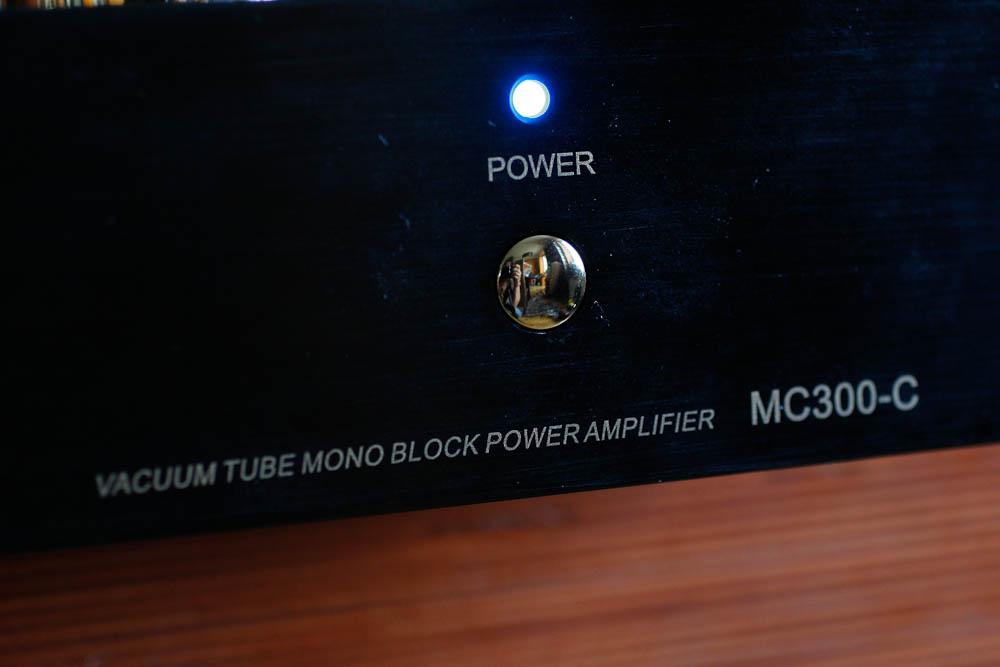
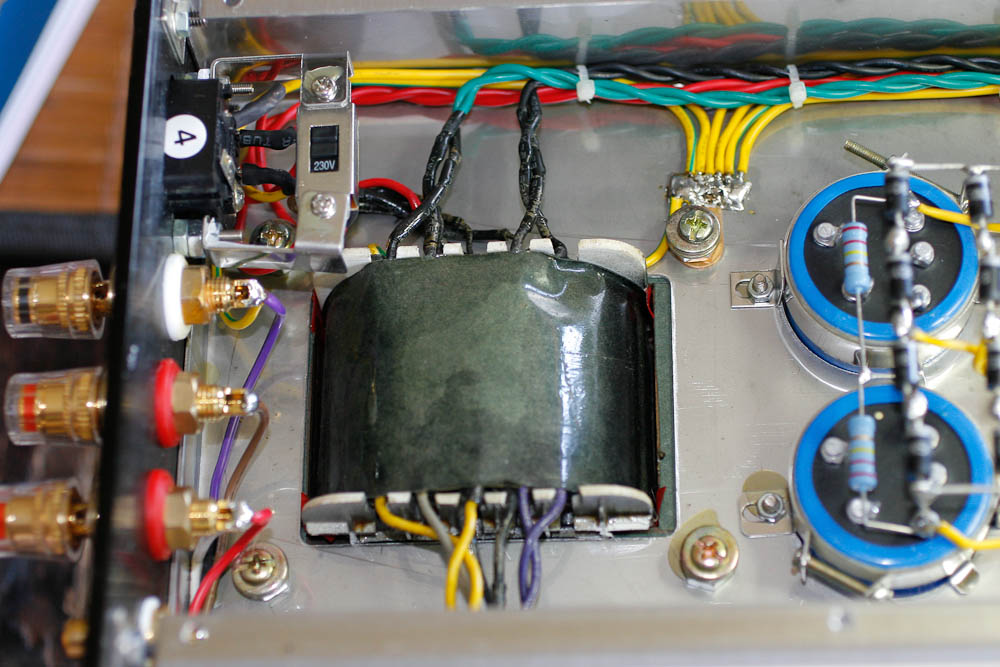
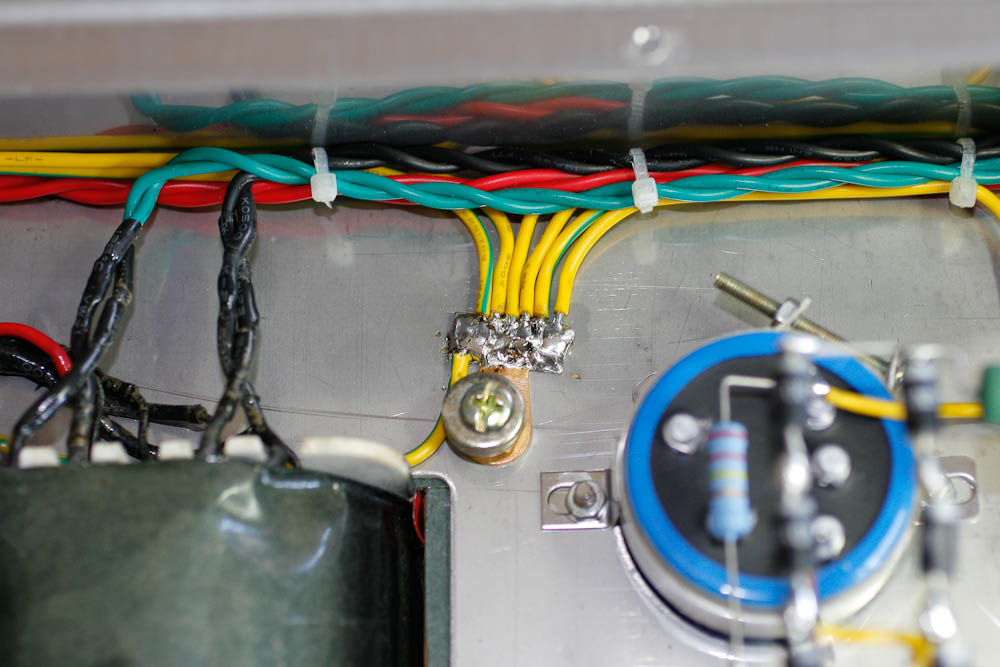
Above: note the
well made star ground scheme.
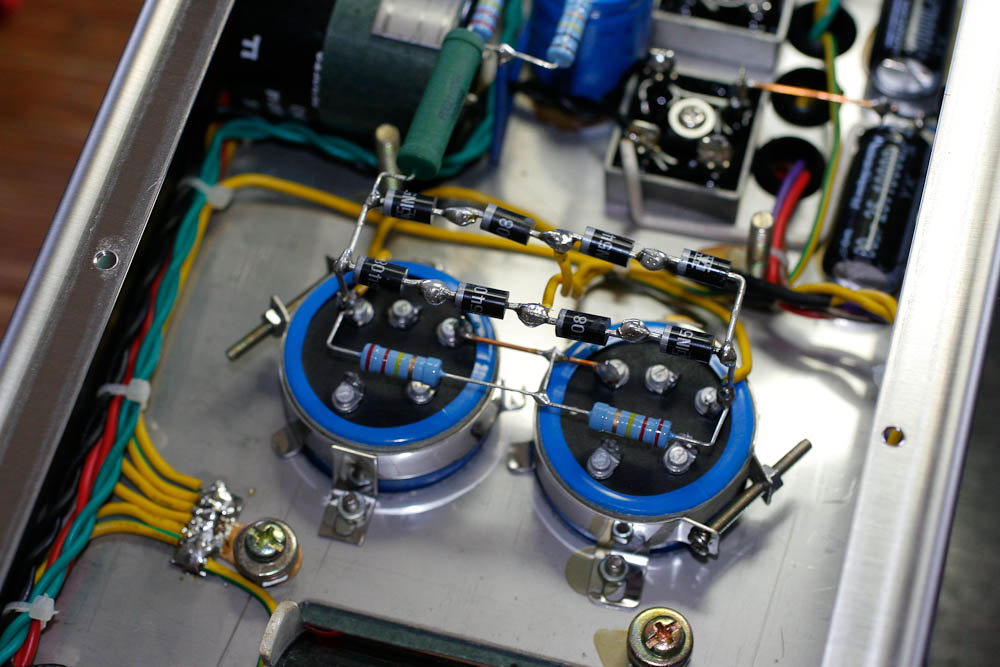
Above: these are
two big Philips caps of very high quality. They are
connected in series with the voltage balancing diodes and resistors, so
the overall voltage rating becomes double. This is circa 900 V DC.
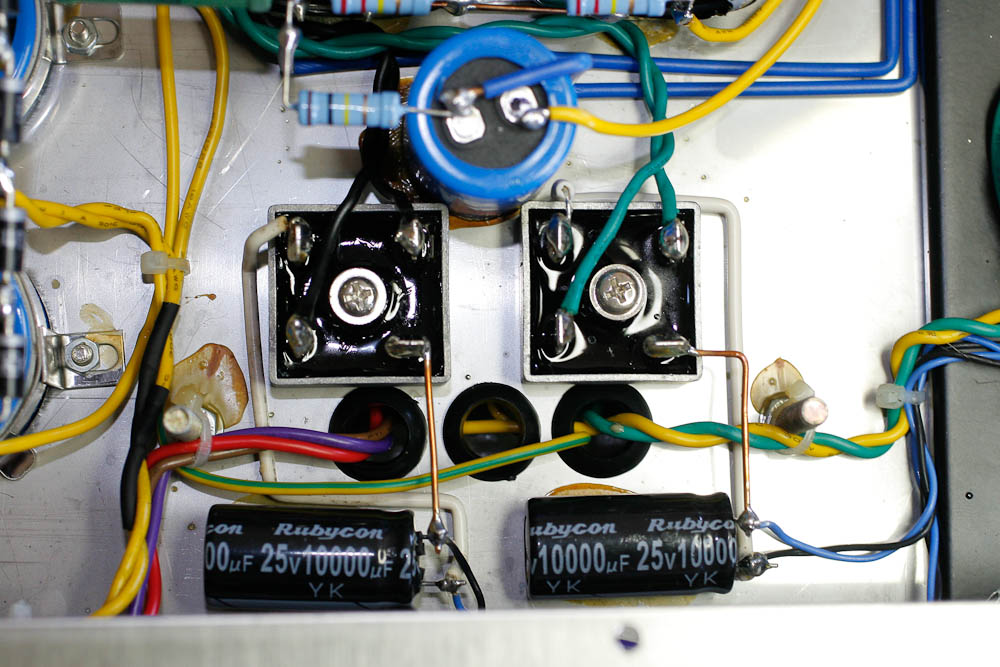
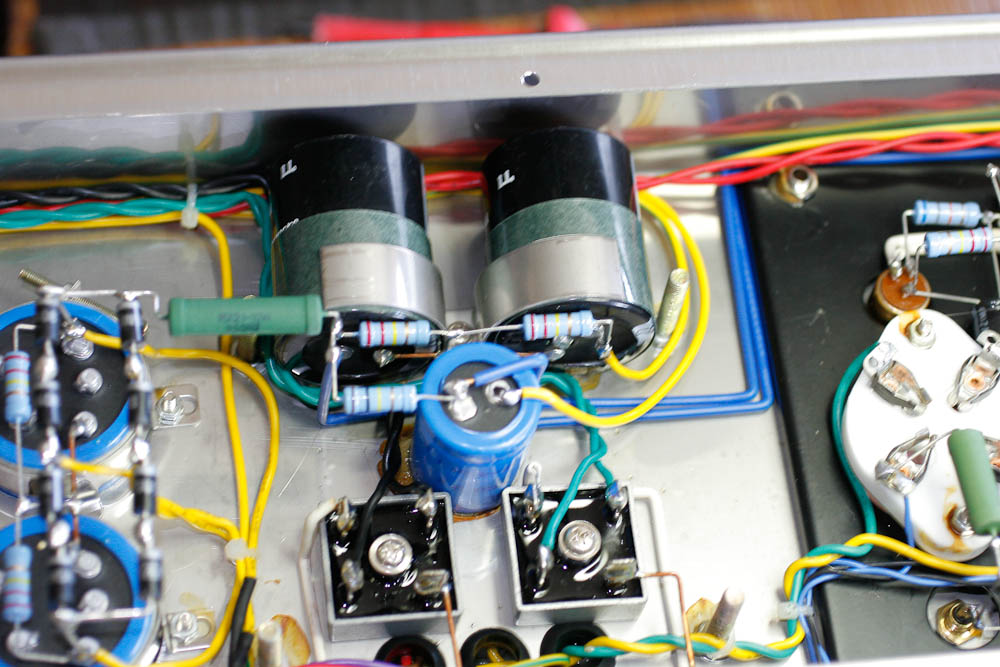
Above: note the
metal clamps which hold the caps - they are
additionally insulated from capacitor body wy some insulating material.
(green-ish). This is such a nice touch - shall the cap break from the
electrode to the body - it will not affect the safety of the amp
chassis. Well done.
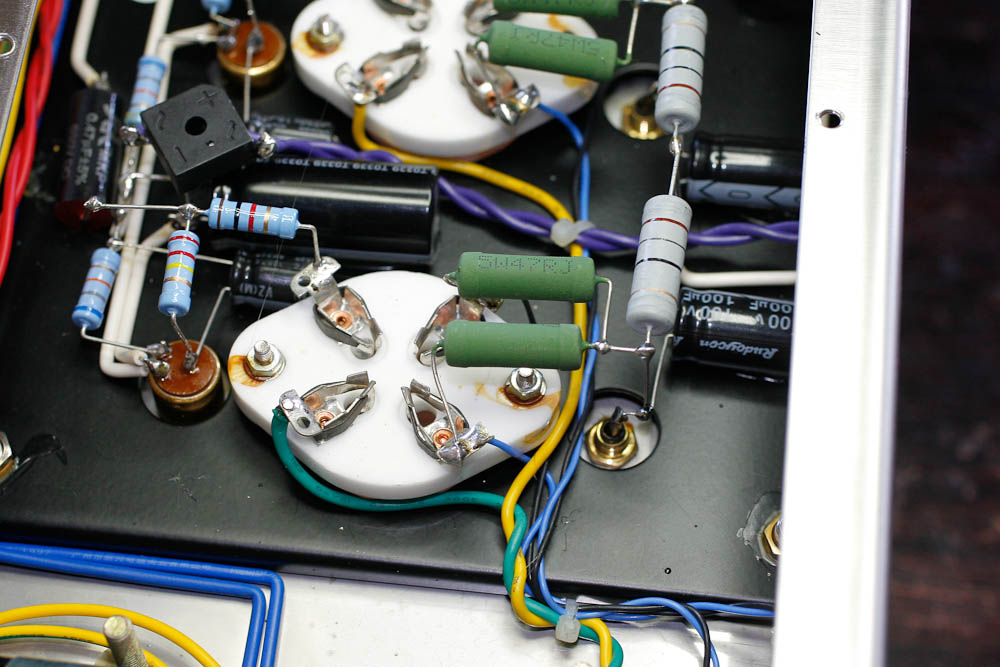
Above: the 300B
sockets with blue resistors which supply negative
bias voltage to the grids, and big green resistors which make
de-humming circuit for the cathode. It would be much better to
replace these two resistors with a 1 Watt potentiometer of 50 or 100
Ohms with center wiper going to the cathode resistor.

Above: the brown
cylinder is the bottom side of the biasing pot. These
tubes work in push pull so by definition they cant have automatic bias.
~To balance both tubes we need manual biasing.
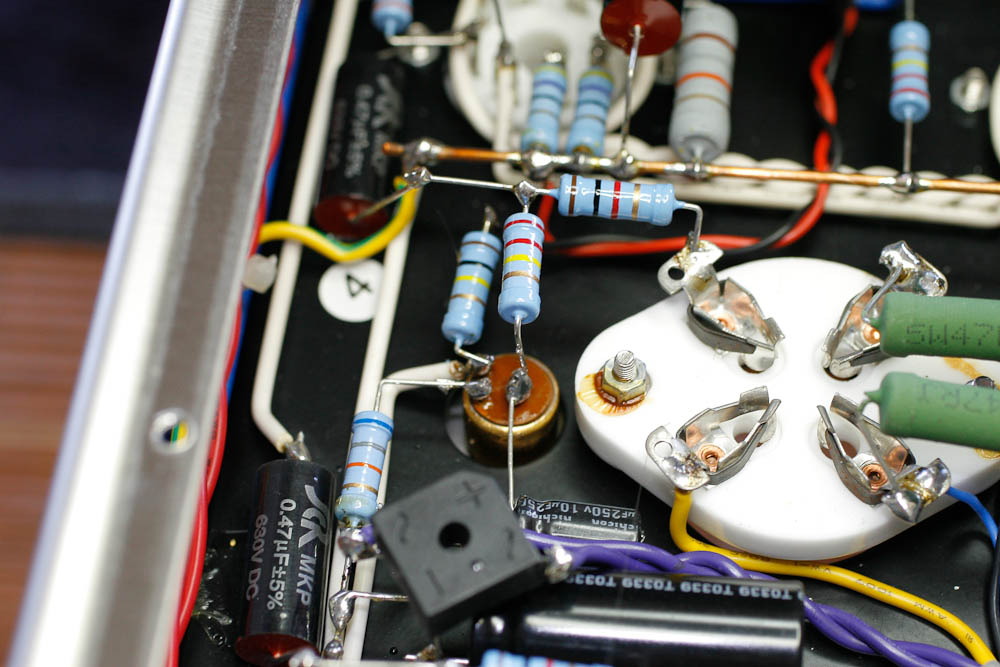
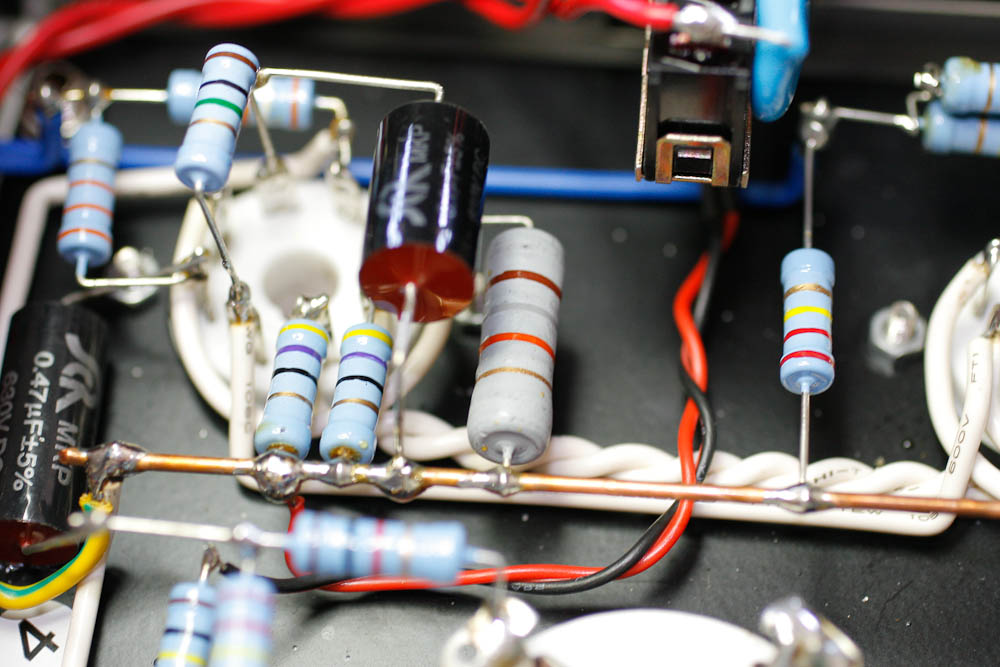
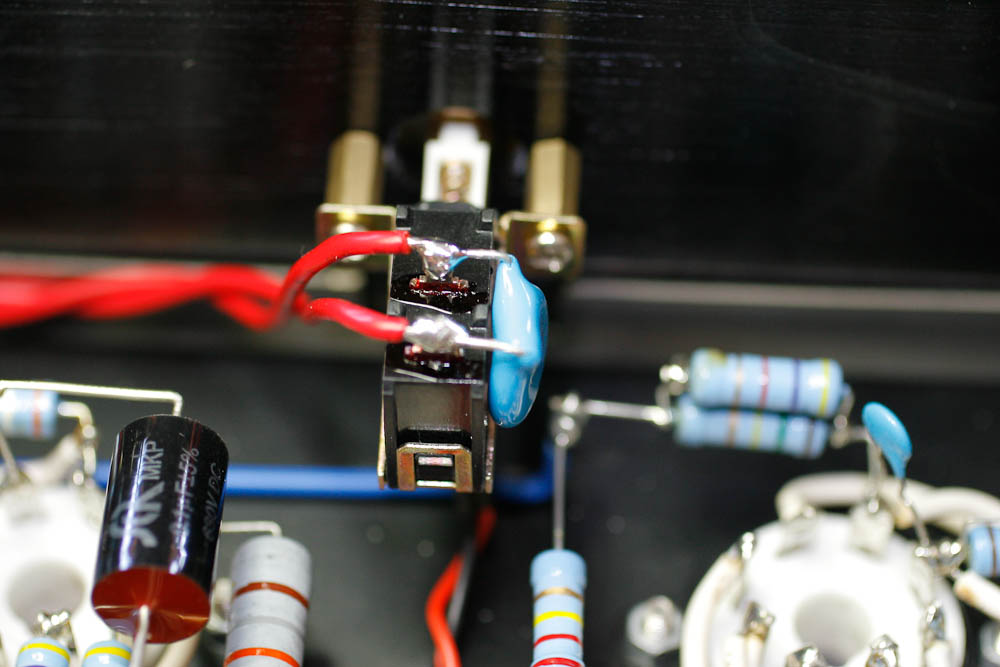
Above: the power
switch has a capacitor across the legs in order to
extinguish arcing during switch off. Very nice touch. It extends the
life of the switch more that tenfold.
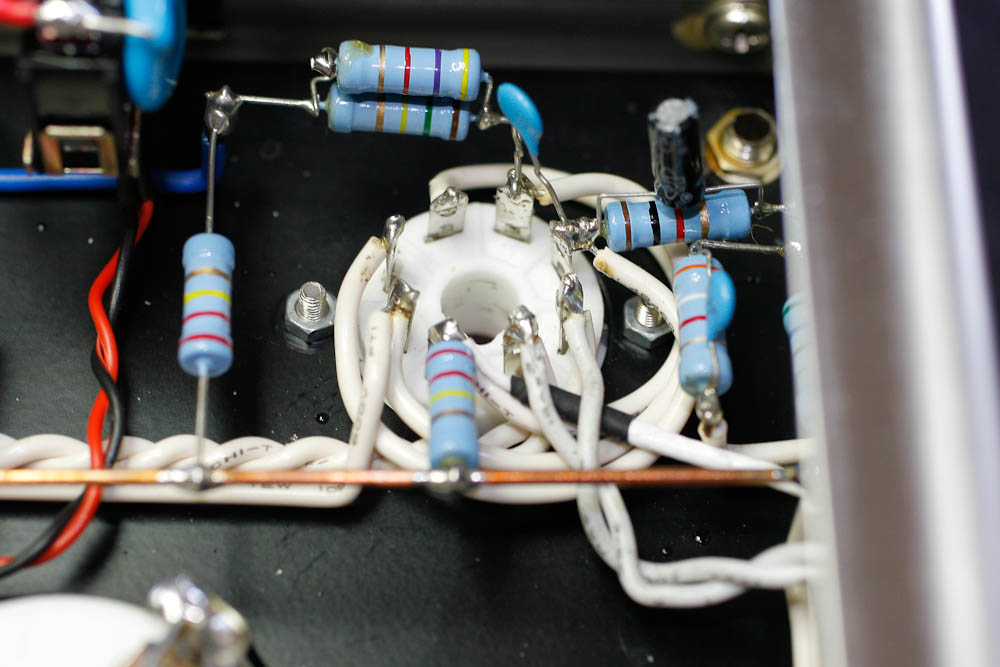
Above: the
socket of the driver tube.
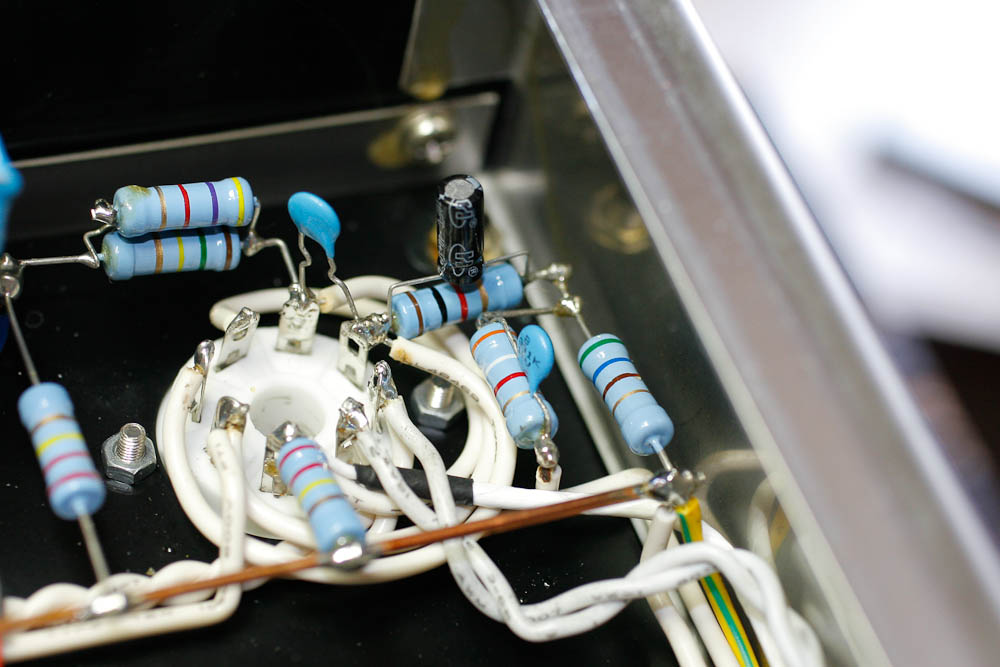
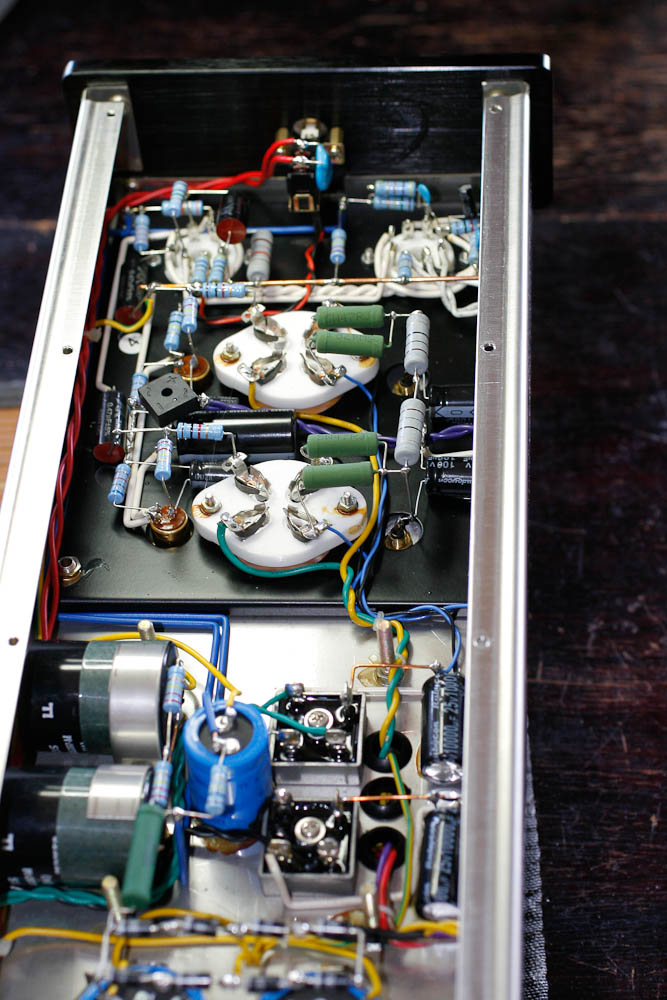
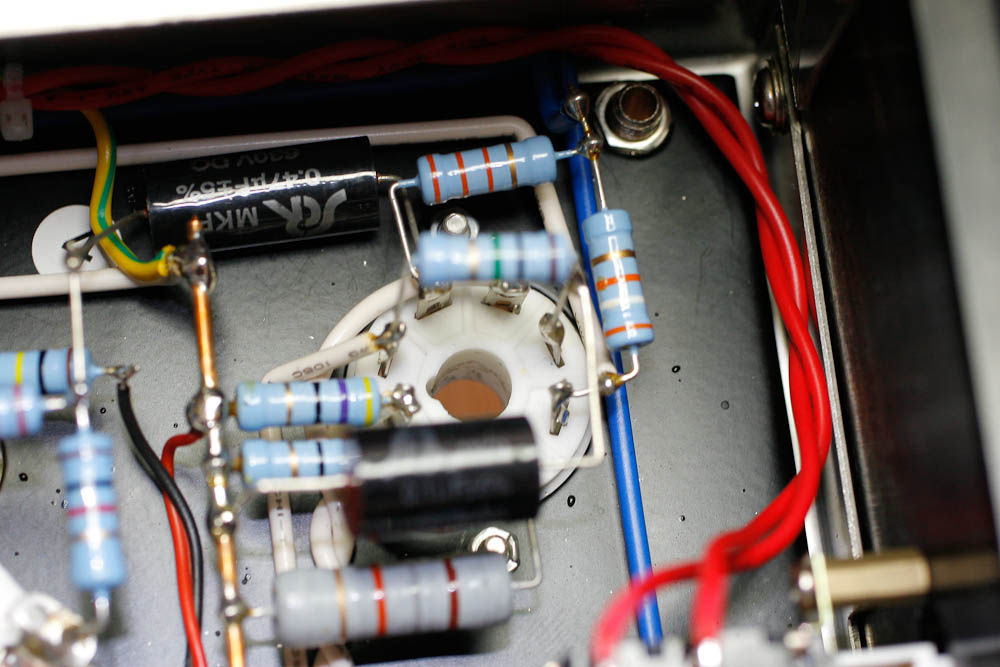

Hahahahaha. What
a capacitor! Just look - Rudoycon ! The creative
people from China created a new hot brand. Hahahahaha !

Above is my
version of the driver: change the tube to 6SN7GT or 6H8C
and use only first triode in anode follower scheme. Go directly
from RCA to the grid of that triode.
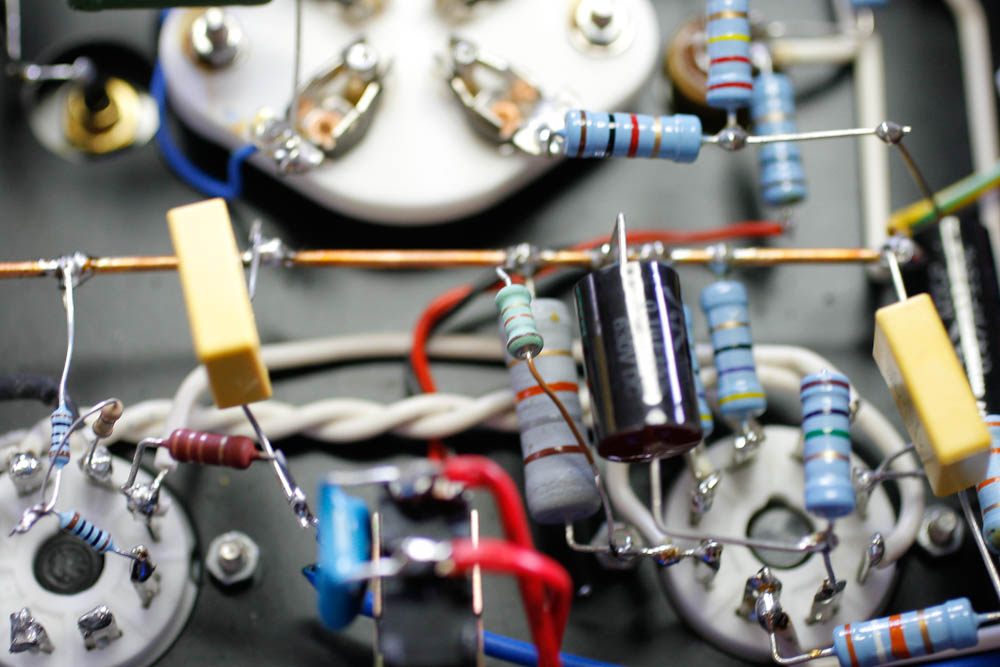
My experiments
with various schemes for the driver / phase splitter
(the left hand side tube when looking at the amp from the top.

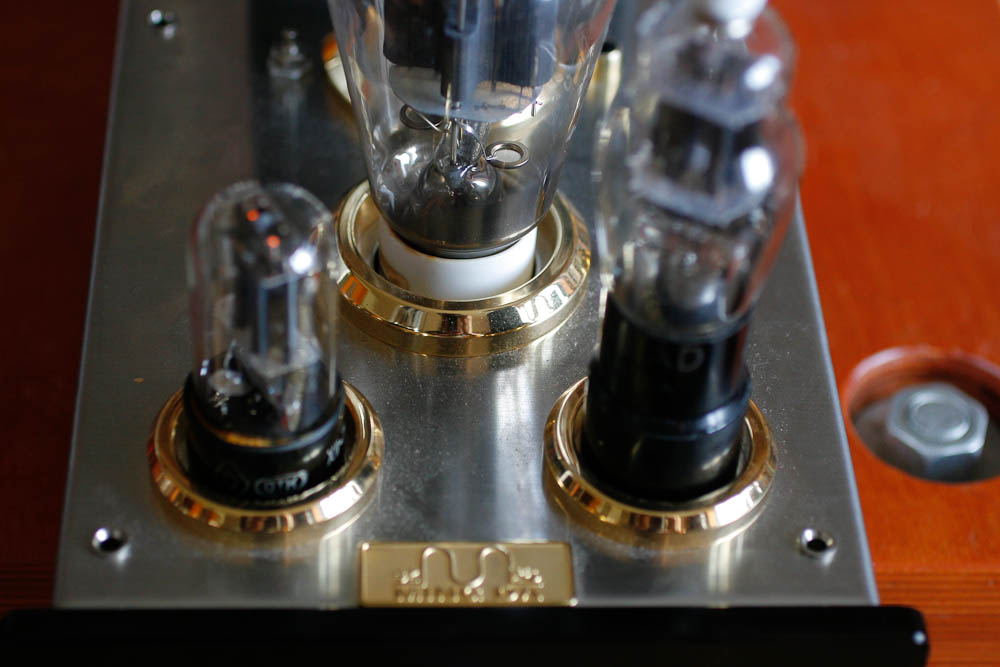
Above: note that
the right tube was changed by the owner to an exotic
nos predecessor of 6SN7GT which I dont remember but it had anode on top
of the tube .
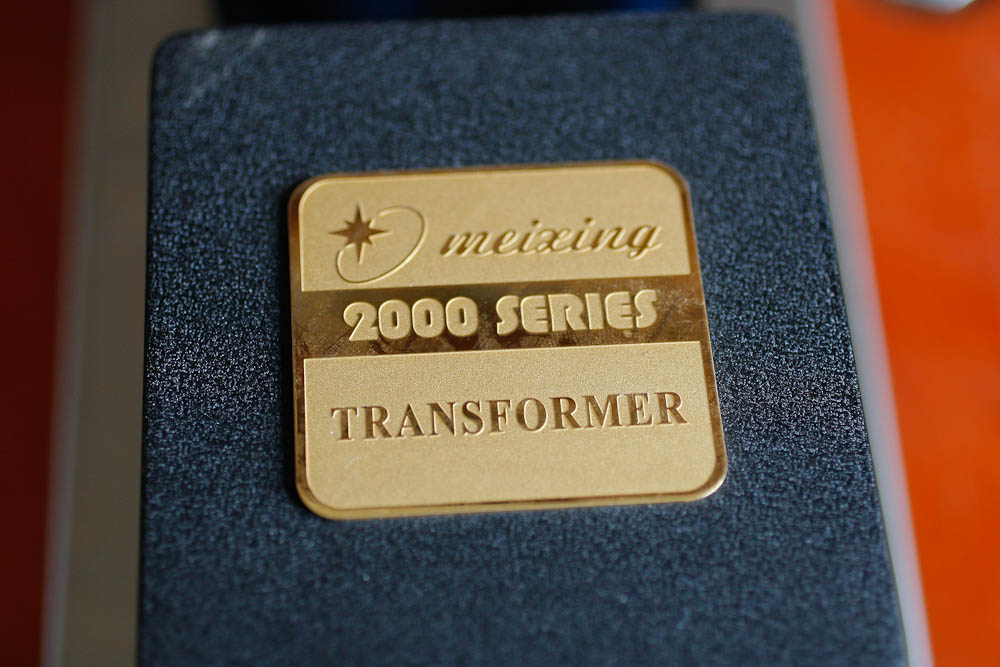
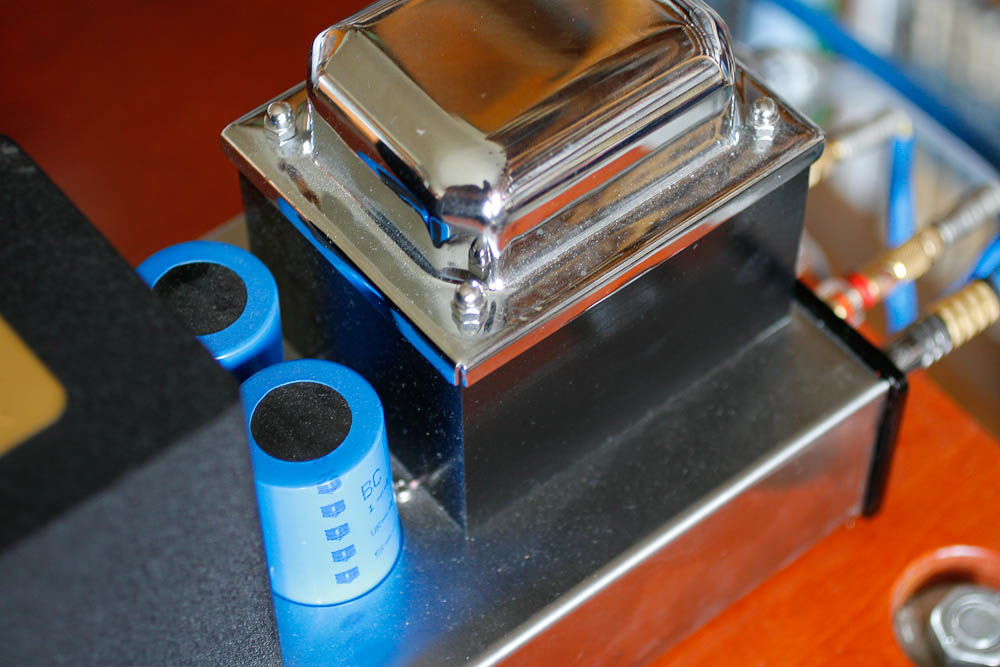
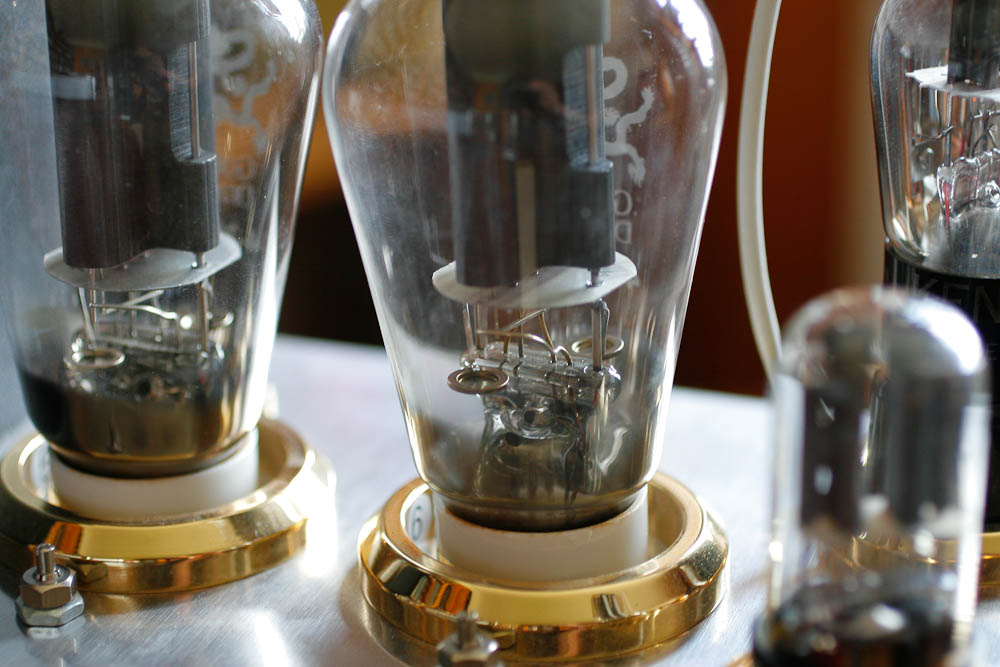
For a brief
moment I installed in place of these chinese graphite
Dragons - a pair of Svetlana standard 300B's and I heard more details
and better bass definition with the Russians.
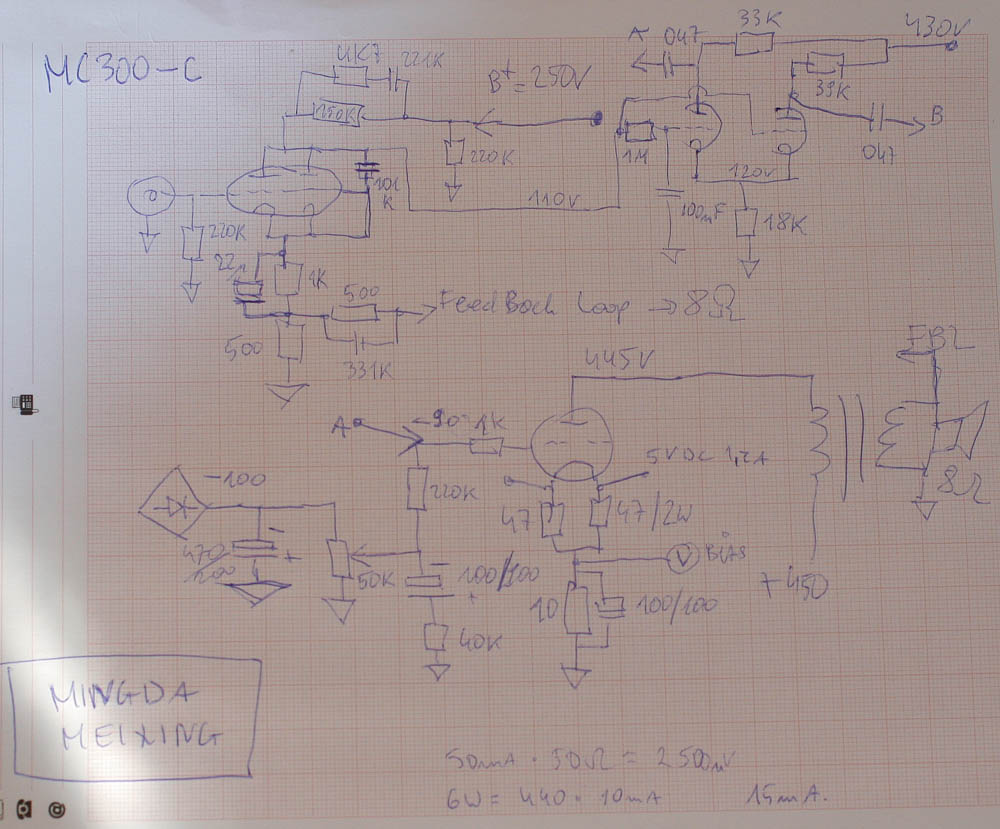
Above is the
stock form schematics as I found it.
Next week I will post the new scheme of my design that worked
great.
Enter the 805
monos
These babes are
about twice the size and weight of the 300B amps. They
are 50% more costly too. A striking feature is the usage of a well
known power tube - 2A3 - as a driver of the big 805 tube. Such
powerful driver can handle high levels of voltage swing and it has very
low output impedance so it is a known practice to drive the big triodes
like 211, GM70, 845, 805 and 813 with tubes like 300B or 2A3.
Does it make
sense ?

Above - you can
see that we upgraded the tubes from stock Chinese to
RCA's. While not much better, the RCA's offered more liquid and
attractive midrange. But the Chinese were very close indeed.
The 2A3 was a
stock Chinese Golden Dragon.
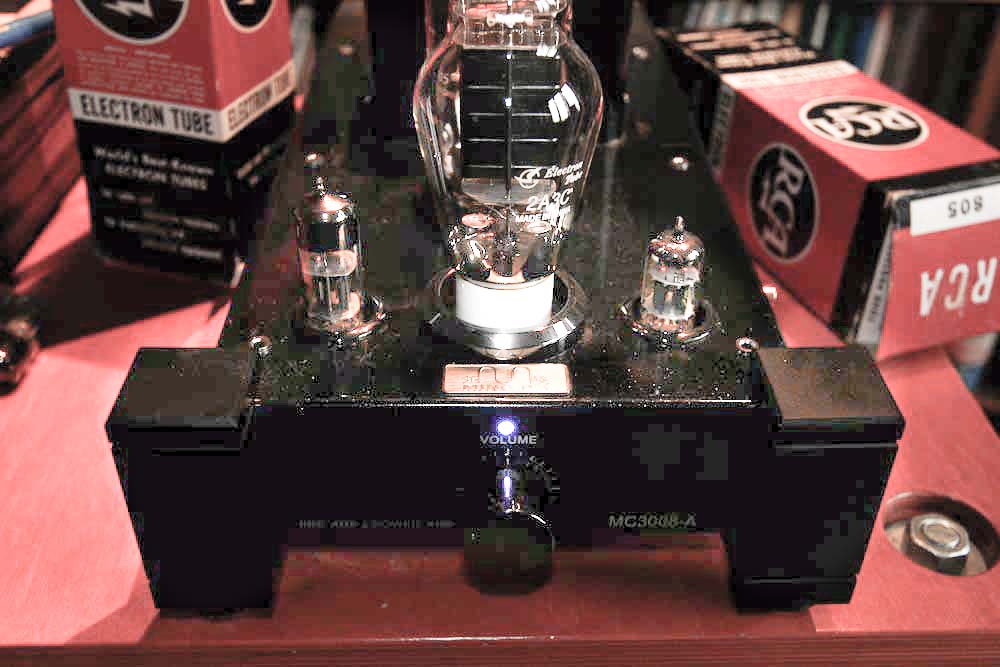
Unlike the 300B
amp - this one has potentiometer as well as a second
input which bypasses pot completely. Good choice.
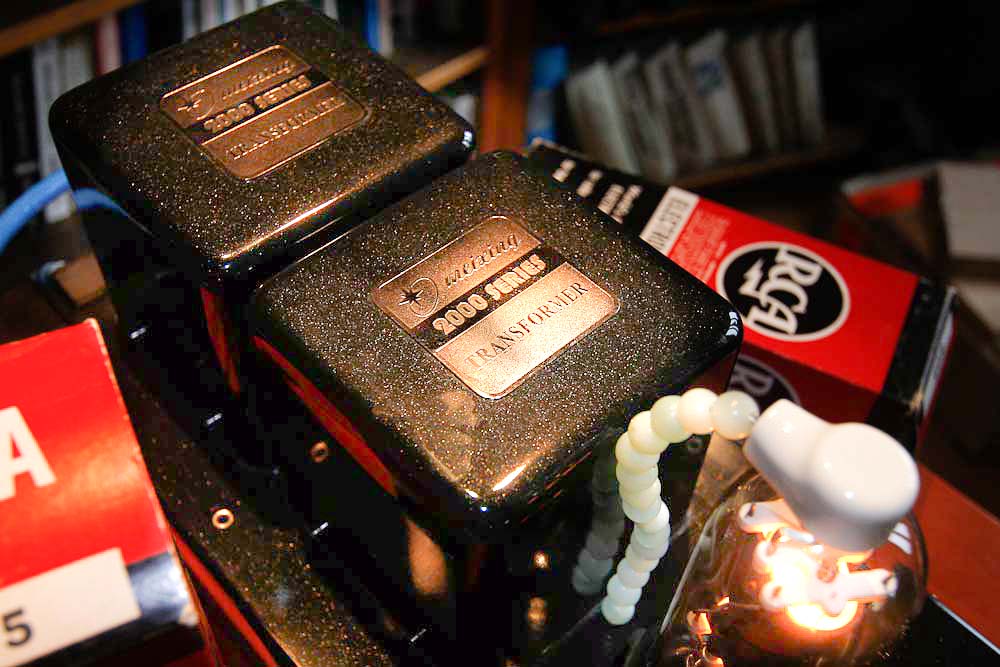
As you see, the
mighty 805 is a tube with anode on the "head". I think
this is quite dangerous to have 900 V DC hanging around on such wire.
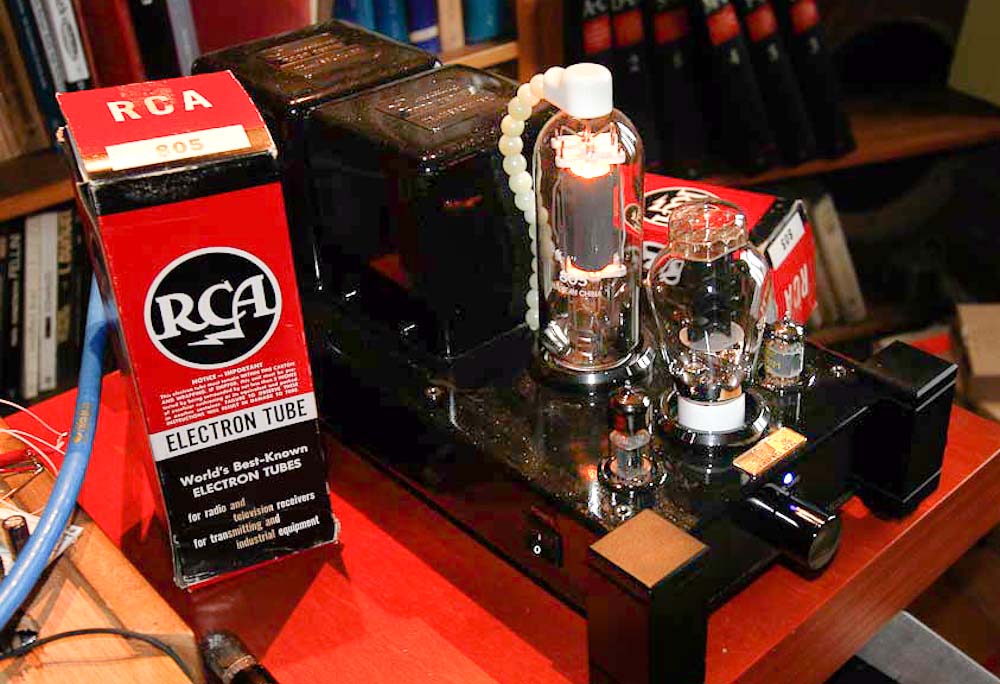
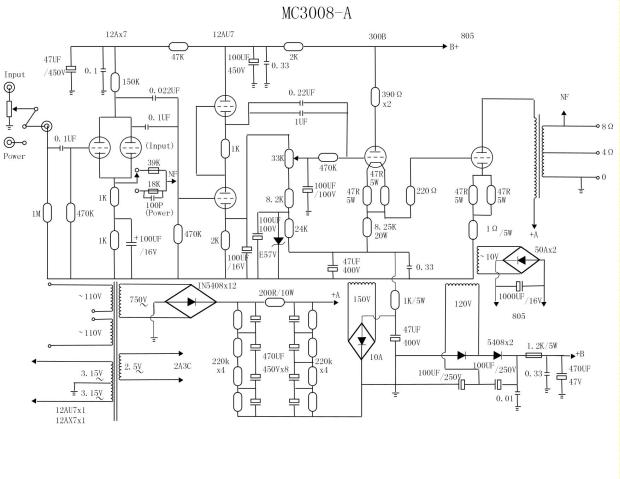
This is the
schematics from the internet which is not precise but
almost.
Before my mods
that amp was already much better than stock 300B amp. It
was veery loud, meaning - sensitive. It also had the 50 Hz brum - which
is really annoying.
But overall the
music was good, tubey, powerful etc.
But it was not
as good as my similar in class GM70 monos.
So I tried to
improve it.
In order to
improve the sensitivity issue I decided to remove entirely
the first tube. It was unnecessary to have 3 tubes before the 805. Two
should be enough.
I connected the
input directly to the input of the second tube.
Since the second
tube is a driver of 2A3 - I decided to use a powerful
tube my beloved 6H6P as a driver.
It works in SRPP
mode so I reduced the lower cathode resistor from 2K
to 1 K to match the upper cathode.
To augment the
bass and improve sensitivity of this setup I added a
lower resistor cathode bypass by means of 470 uF / 16 V OSCON cap with
minus to the ground.
The elimination
of the first tube automatically removed the global
feedback loop. So far so good.
To eliminate
humming - I removed at both - 2A3 and 805 the two
resistors between the cathode and their cathode resistor and the
resistor pairs (on schematics 47 Ohms, in real life 25 ohms each) were
replaced by potentiometers - 100 Ohms by 1 Watt - 10 turns precision
type. By turning these resistors I was able to dial in the
silence.
FIrst - I
removed 2A3 tubes and I dialed the 805 silence, then I
installed 2A3's and dialed them to silence.
This is the
proper way of handling the hum issue.
I biased the
805s to 70 mA each.
I also
eliminated the entire circuit between the lower cathode of my
6H6P and the 2A3 grid. I just kept the upper cathode signal input.
After these
changes - the amp exploded with music. Space, detail,
depth, dynamics - everything improved. Sensitivity was just OK with my
normal source signal giving great loudness at 11 o'clock. I think the
full power sensitivity has reduced from 0,7 V to 3 V which is great.
This amplifier
is wonderful - with charming mids, deep bass, pure sound
and silent background. While it is not Ongaku, it is damn close. It
beat my own super duper GM70 with everything the best I could
find including Mundorf gold oil caps, E182CC drivers, copper plate
power tubes, silver wiring etc.
The mods are 1
hour if you know what you are doing. Just bypass first
tube, clear off its socket from the circuitry, change heating of the
second tube to pins 4 and 5 like for 6H6P, reduce resistor from 2 K to
1K, bias the power tubes well and voila - you have a world class monos
for under 2 grand.
Very much
recommended.
(not even
mentioning doing the same with premium tubes: e182CC instead
of 6H6P, better 2A3, and US made NOS 805's. )
I will post the new schematics next week.





























